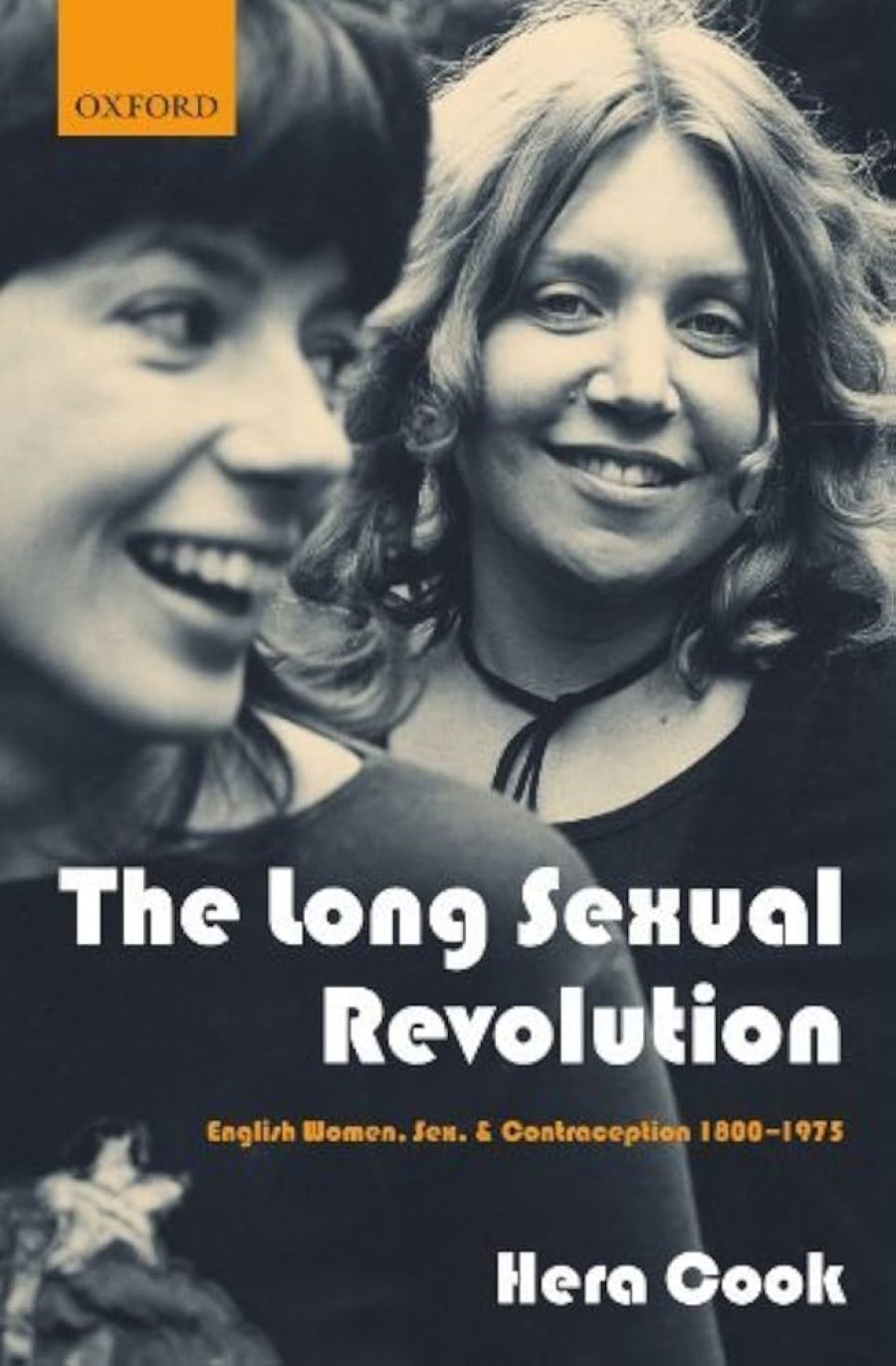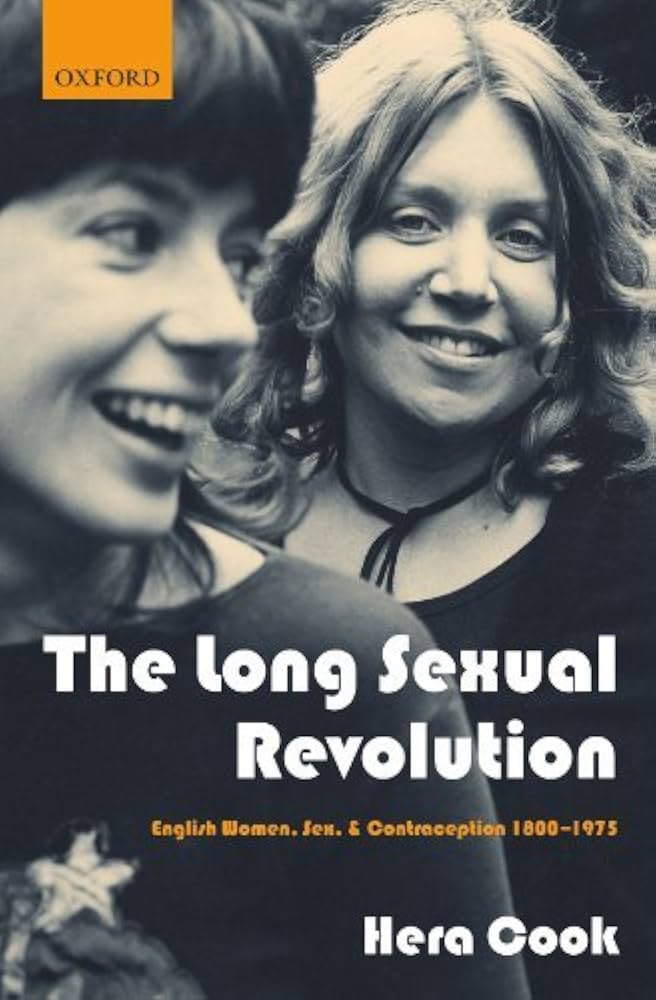
- Free Article: No
- Contents Category: Feminism
- Review Article: Yes
- Article Title: High Risks, Little Reward
- Online Only: No
- Custom Highlight Text:
This is a big, bold book with an enormous scope: almost two centuries of sex, birth control and heterosexual relations. It is an ambitious project, but Hera Cook has produced an intriguing mix of broad survey and close, detailed analysis. The basic premise of The Long Sexual Revolution is that sex and reproduction were intertwined. ln many histories, sexuality and reproduction are discussed as if the two were unrelated, but Cook indicates the ways that contraception and control over reproduction were crucial to both sexual pleasure and sexual change.
- Book 1 Title: The Long Sexual Revolution
- Book 1 Subtitle: English women, sex and contraception 1800-1975
- Book 1 Biblio: Oxford University Publishing. $110 hb, 412 pp
- Book 1 Cover Small (400 x 600):

- Book 1 Cover (800 x 1200):

Also explored is an eclectic range of topics pertaining to heterosexuality. The chapters on masturbation are particularly interesting, for they suggest the extent that ideas about touching the genitals infiltrated heterosexual practice. In the years after the Great War, ideas of contagion (both moral and physical) meant that English women were reluctant to employ female-centred contraceptives that involved insertion or penetration. Similarly, the close reading of sexology and sexual self-help texts provides an extremely useful survey of how sexuality was conceptualised in the twentieth century. This is supplemented by evidence from diaries, autobiographies and surveys, giving a detailed picture of how sex was experienced. For example, in the early twentieth century, British culture understood sexuality in almost entirely negative terms, as something to be controlled rather than as a source of physical and emotional pleasure. In the interwar years, writers on sexuality began to consider the myriad ways that sex may be integral to the happy marriage and the successful citizen. Some were paternalistic, some patriarchal, but at least there was a sense that sexuality might be something to be enjoyed. By the 1950s the robust economic climate meant that women were more likely to experiment sexually outside of marriage. Though birth control was not yet foolproof, women had much to gain from premarital sexual petting and intercourse, for it allowed them to experience pleasure and not simply fear.
Finally, Cook examines the great turning point in birth control, the contraceptive pill. Countering earlier histories that suggest that the pill was preceded by sexual change, Cook successfully argues that the pill did in fact alter the sexual landscape. Drawing on medical sources, media reports, demography and sexology reports, she is able to chart the ways that the availability of inexpensive and reliable contraception revolutionised sexual activity by permitting women to take responsibility and control over the sexual processes.
As this brief overview suggests, this book covers an extraordinary range of ideas. It is also exhaustively researched. I felt that the introductory chapters were the less interesting, as they were based more firmly on secondary material. When the research is her own, Cook gains confidence and authority, and the primary evidence is a joy. Not only is it fascinating in itself, but Cook offers innovative analysis. The arguments here are subtle and sophisticated: wherever necessary, Cook offers a reading that moves beyond simple dichotomies and obvious narratives. While providing an extensive survey of the key turning points, Cook is also aware of the nuances of class and gender, and deals with these effectively.
Nor is Cook afraid to take on the big names. 1n his History of Sexuality, Volume I (1978), Michel Foucault rejected the idea that the Victorians were sexually repressed, and this idea has been a backdrop to most recent writing on the history of sexuality. Cook, however, offers a significant and persuasive challenge to Foucault, suggesting that sexual repression was long lasting for women. While a wider reading of feminist critiques of Foucault might have been useful here, to my mind Cook effectively makes her case.
In an otherwise comprehensive account, I felt more attention should have been paid to the specificities of abortion. Abortion is often mentioned but it is never made the centre of analysis. This is strange, given the centrality of abortion to women's control over births. Perhaps the sources do not lend themselves to a close analysis of abortion – abortion is more frequently articulated through absence and silence.
Such criticisms are, however, minor. The Long Sexual Revolution is an impressive addition to British histories of sexuality and the body. It will also be useful for research. teaching and general interest. Further such a book is timely. Currently, reproduction is under the spotlight, with concerns over low birth rates and re-emerging debates over abortion. This book serves as an important reminder of what happens when women don’t have access to safe and effective birth control and reproductive choices.


Comments powered by CComment